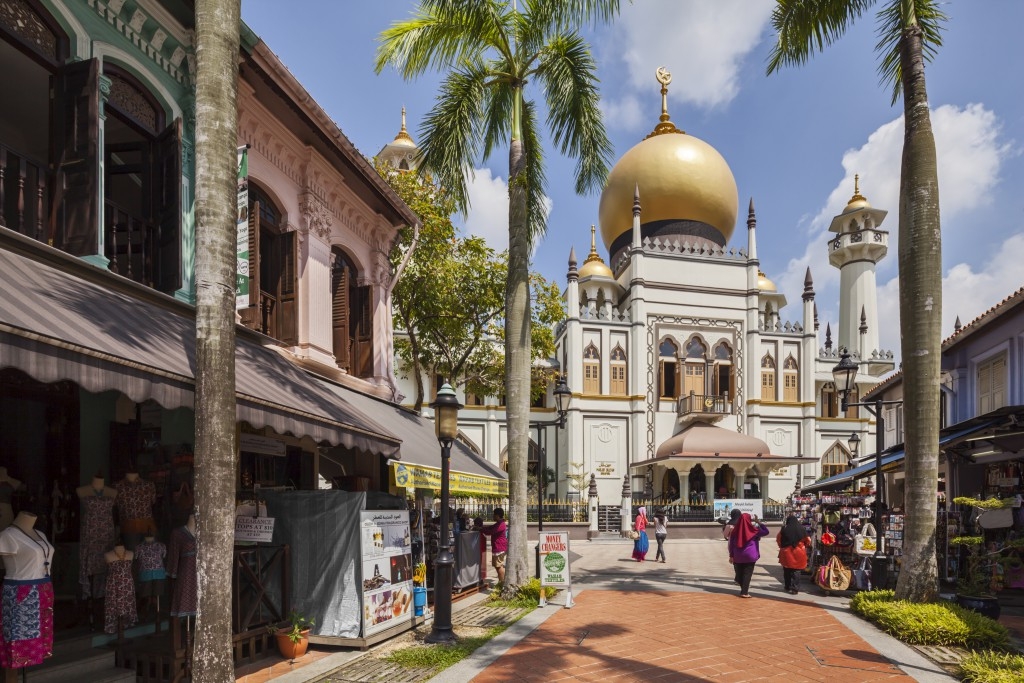
Like Chinatown and Little India, the Malay community in Singapore has their heartland. Back in 1822, Sir Stamford Raffles allocated the Kampong Glam area to the Malay Sultan, Hussain Mohammed Shah. The Malay community, including Arab and Bugis traders soon set up shop. It is an area of great history and culture and is perfect for a food tour.
Kampong Glam was once a thriving port and considered to be Singapore’s oldest urban quarters. The word, “Kampong” is Malay for village. As for ‘Glam’ there are two theories to it.
Our Malay tour guide Salma, believes that the most common theory is because of gelam trees. These trees have many uses. The bark of the tree could be used for weaving and to caulk boats. Making the boats watertight. The fruit was often used as a food and the timber for the building of boats. The oil is also part of traditional Malay medicine that sold and prepared within the area too.
Another theory comes from the Orang Gelam people. They had a settlement near the Singapore River. The Orang Gelam provided services to the temenggong of Singapore serving as boatmen.
An old fishing village.
For the longest time, Kampong Glam was a fishing village due to its location on the Rochor River. Providing Singapore with food from the ocean.
In 1822, a treaty was signed to set up a trading post in Singapore. Right after signing, the Sultan brought his family and entourage from Riau. They settled in Kampong Glam, where the sultan built a walled compound. The area soon became the centre for Malay and Muslim communities. And it still is today.
It was then that a plan was drawn up to divide Singapore into sections. Each specific settlements had its purposes. It was then that, the Malay communities were divided. The Bugis Traders were relocated near the Kallang River. The Arabs were assigned to the land next to the Sultan’s property.
During those years, the Sultan built a mosque, madrasahs, Malay schools and printing houses. Each street had specialized trades. Traders from India, China, and Arab communities. Our food tour explores these streets and soaks in their unique character.
What is it today?
In 1999, the Singapore government announced plans to develop a Malay Heritage Centre. This involved the redevelopment of the palace and the property next to it. In 2005, the Malay Heritage Centre was born and is still standing strong today. Today, many Malay festivals take place at the courtyard of the palace.
The area is filled with great food from some of the best known family names in the Singapore food scene. We visit some of these on our Little India and Kampong Glam tour as well as taking in the local culture.
Book the best food tour in Singapore today at www.singabites.com/tours
